When pests invade your home, your first instinct might be to take control yourself—and that’s where DIY pest treatment options come into play. But before you grab the nearest spray bottle or search for home remedies, it’s important to understand the key differences between natural DIY pest control and chemical pest control methods. Each has its strengths and limitations, and choosing the right approach can make all the difference in achieving safe home pest control that actually works.
Natural Pest Control Methods
Many homeowners prefer natural pest remedies because they prioritize safety for children, pets, and the environment. These eco-friendly pest solutions rely on ingredients commonly found in your pantry or local health store. Here are some popular natural options:
- Essential oils (peppermint, tea tree, and eucalyptus) repel ants, spiders, and mosquitoes.
- Vinegar and lemon juice are excellent for cleaning and deterring ants.
- Diatomaceous earth kills soft-bodied insects like bed bugs and fleas by dehydrating them.
- Herbs like basil, lavender, and mint can act as natural repellents when planted around the home.
These methods are best used for preventative pest control or managing small, non-aggressive infestations.
Chemical Pest Control Methods
For more severe infestations or stubborn pests, many homeowners turn to chemical pest control methods. These include:
- Store-bought sprays and aerosols designed to kill on contact.
- Bait stations and traps that lure pests in with poison or adhesives.
- Foggers and bug bombs that blanket an entire room with pesticide.
These products are often faster-acting and more effective for widespread problems but come with additional precautions. Always follow manufacturer instructions carefully to ensure safe home pest control when using chemical products.
Pros and Cons Comparison
Let’s break down the key differences between natural DIY pest control and chemical approaches:
Factor | Natural Methods | Chemical Methods |
Safety | High (safe for families & pets) | Moderate to low (use with caution) |
Environmental Impact | Low (eco-friendly pest solutions) | Higher, due to synthetic ingredients |
Cost | Usually lower | Can be more expensive |
Effectiveness | Great for prevention & mild issues | Stronger for severe or persistent infestations |
Ease of Use | Simple, but may require frequent reapplication | Convenient, often one-time treatments |
When to Use Each Approach
Use natural DIY pest control methods when:
- The infestation is mild or newly developing.
- You’re looking for eco-friendly pest solutions.
- Safety is a top concern, especially around kids or pets.
- You’re aiming for ongoing prevention rather than elimination.
Choose chemical pest control methods when:
- There is a major infestation (e.g., termites, bed bugs, or roaches).
- You’ve tried natural remedies without success.
- Time is critical and quick results are needed.
- The pests pose a direct health or structural threat.
In some cases, using a hybrid approach—starting naturally and transitioning to chemical treatments if needed—can be highly effective.
Conclusion
Both natural pest remedies and chemical pest control methods have their place in a homeowner’s toolkit. The key is knowing when and how to use each to achieve safe home pest control that suits your situation. Whether you lean toward eco-friendly pest solutions or choose the power of store-bought treatments, always consider the safety, effectiveness, and long-term impact of your choice.
If pests persist or you’re unsure which route to take, professional help is just a call away. Contact Horizon Pest Control today for expert advice and customized pest management solutions that work for your home and your lifestyle.


